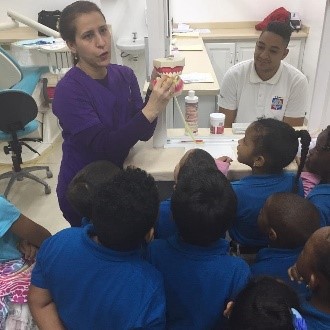Long Term Curriculum Planning
| 11 November 2020 Planning is very important to learners’ developing and growing in the knowledge and skills they need. An effective teacher thoughtfully plans lessons ahead of instruction, defining goals and objectives, and developing engaging learning activities. Yet lesson plans only are one type of planning. They look at the short-term. Let’s not forget about the long-term view for curriculum over a whole school year or term. Is there a way to plan for how all your daily and weekly plans fit together? A long-term curriculum plan is a great tool to help you plan your school terms with the end in mind and set the route for how learning will take place. The Value of Long-Term Curriculum Planning A long-term plan is a general outline of how to accomplish major curriculum goals of the school year. It gives a big picture view, with the beginning of the school year or term as your “starting location” and the end of the school year or term as your “destination.” Think of it as a navigation plan that you might use to get to a store. A long-term plan, with major curriculum goals placed along the path, allows you to know where you are going and how you will get there. It is helpful in that you do not have to have every detail of the plan or pathway figured out for it to keep you focused and on-track towards your destination. It is not limited to one type of educator, and it becomes a reference tool for the remainder of the school term for which you planned. Making a Long-term Curriculum Plan To begin, you will need to gather supplies and make initial decisions. Be prepared for spending an hour or more developing your long-term plan. First, decide on the time frame of your plan. Will you plan for the whole year, a semester, or a few months? Second, gather supplies needed. Locate your school’s curriculum documents (e.g., scope and sequence, unit or chapter titles) that guide what you are expected to teach during this time frame. If you do not know where to find these, ask your school leadership or a fellow teacher. You’ll also want access to a regular calendar, your school calendar, a way to record your plan, and a writing utensil, if using paper. I suggest using a format that is easily changeable. My favorite way to make my long-term plan was using small, colored sticky notes and my lesson planning book. Find what works best for you; it may take some time. The focus is on making a plan that is practical and available for use throughout the time period you’ve decided on. You will come back to your long-term plan multiple times. After gathering supplies, mark off on your calendar all school holidays, days off, days with special events, and end of term days. This allows you to know the number of instructional days available as well as disruptions to the flow of your  teaching times. Next, look at your curriculum documents and identify topics or units of study to cover. You may need to decide the length of time to spend on each, or perhaps there is guidance from school documents. Either way, begin placing these topics in your plan, keeping in mind available instructional days. Remember, you are only looking at the topics or units you will be teaching. You are not considering individual lessons or your daily lessons. This is an overview, so you can focus on those aspects later. If you have multiple subjects or disciplines, repeat this process for each respective unit. Now, take a deep breath and do a little celebration dance or something to recognize this hard work! teaching times. Next, look at your curriculum documents and identify topics or units of study to cover. You may need to decide the length of time to spend on each, or perhaps there is guidance from school documents. Either way, begin placing these topics in your plan, keeping in mind available instructional days. Remember, you are only looking at the topics or units you will be teaching. You are not considering individual lessons or your daily lessons. This is an overview, so you can focus on those aspects later. If you have multiple subjects or disciplines, repeat this process for each respective unit. Now, take a deep breath and do a little celebration dance or something to recognize this hard work!Using a Long-Term Curriculum Plan Remember, a long-term plan is a guide, meaning it is flexible. It provides the structure you need but allows you to create daily lesson plans based on your students’ needs and other needs that arise. In her article, Kristen Moreland emphasizes the benefits and use of a long-term plan when she says, “A mentor of mine long ago once told me, ‘You can’t be spontaneous unless you are expertly planned.’ When you know where you are going, you have the freedom and flexibility to respond to students’ needs and interests and not be frustrated by the unexpected.”[1] This is key in the life of a transformational teacher because it allows room for the Holy Spirit to guide you. Invite the indwelling Holy Spirit to be your guide as you implement your long-term plan into daily lessons. He knows the needs of your students more than you do. He gives you the freedom, flexibility, and strength to carry out the daily tasks of instructing and guiding learners’ hearts towards God. Together with God, a long-term curriculum plan is a powerful tool in the hands of educators focused on bringing transformation to the lives of their students. Amanda Ferris, M.Ed. Curriculum Services Coordinator, School Services TeachBeyond Global [1] Moreland, Kristen. “The Purpose, Planning, and Personal Connections That Will Sustain You All Year.” ASCD Express. ASCD, 23 Aug. 2018, www.ascd.org/ascd-express/vol13/The-Purpose-Planning-and-Personal-Connections-That-Will-Sustain-You-All-Year.aspx. Photo Credits: MAPS.ME App via Wikipedia. Planning/Creating via Shutterstock. |








 Thus a yearly curriculum plan will have far less detailed than a unit plan, which will be less detailed than a daily lesson plan.
Thus a yearly curriculum plan will have far less detailed than a unit plan, which will be less detailed than a daily lesson plan. determine how many days will likely be needed for students to reach these objectives. At this stage, you might consider the following:
determine how many days will likely be needed for students to reach these objectives. At this stage, you might consider the following:
 Educational partnerships are an excellent way to model a humble spirit that acknowledges that God has designed people to work in dependence on Him and in cooperation with others. The New Testament uses the metaphor of a body to describe our relationship to Christ and everyone who is a child of God. Everyone is needed, although different parts of the body have different roles. Partnerships are concrete expressions of this kind of inter-relationship.
Educational partnerships are an excellent way to model a humble spirit that acknowledges that God has designed people to work in dependence on Him and in cooperation with others. The New Testament uses the metaphor of a body to describe our relationship to Christ and everyone who is a child of God. Everyone is needed, although different parts of the body have different roles. Partnerships are concrete expressions of this kind of inter-relationship. You can get used to talking about what happens in your classroom and will likely gain important insights as you verbalise your experiences and hear the experiences and insights of others in the group.
You can get used to talking about what happens in your classroom and will likely gain important insights as you verbalise your experiences and hear the experiences and insights of others in the group. Harold and his wife, Betty, have served with TeachBeyond since 1977. From 1998 to the present Harold has been an educational consultant working with teachers worldwide. He has written a book, The Visual Valet: Personal Assistant for Christian Thinkers and Teachers, and his website,
Harold and his wife, Betty, have served with TeachBeyond since 1977. From 1998 to the present Harold has been an educational consultant working with teachers worldwide. He has written a book, The Visual Valet: Personal Assistant for Christian Thinkers and Teachers, and his website, 




